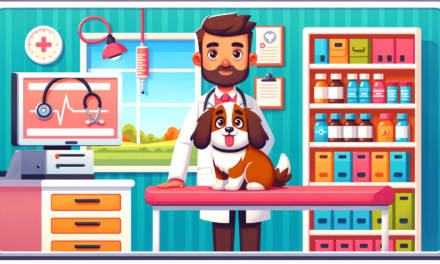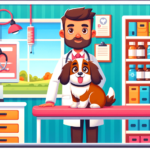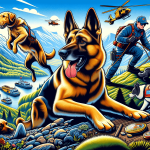Dogs are by far the greatest pets one could ask for. After a long and hectic day at work, watching your dog run to you with its tail wagging makes you forget about it all. You can feel the tiredness seeping away from you.
Having a dog as a pet isn’t just about playing fetch with it or cuddling it. Being a dog owner also means making sure it stays healthy and safe. Just like you, your dog could be suffering from illnesses and diseases. A lot of people are not aware of the fact that dogs can be allergic to certain things as well. Not knowing whether your dog has allergies can be colossal. It means that you are unaware of what to do when your loyal friend has an allergic reaction.
Before you worry about what to do in such situations, you must be equipped with the knowledge of how to detect whether your dog has allergies.

What Is a Dog Allergy?
Dog allergies are not much different from the allergies that some of us suffer from. These allergies are a response from our immune system which gets worked up by things which are not exactly harmful. Possible allergens that can cause an immune response include pollen, food, dust, dander, mold spores, and cleaning products.
The severity of the allergies experienced may vary. In some dogs, all it does is cause discomfort, while in others, it may exhibit as an illness as well.
Top Indications of Dog Allergies
Here are some of the biggest signs that show your dog has allergies.
Constant Itching
Does your dog constantly scratch itself? If so, there is a high chance that it is feeling itchy because it is allergic to something. This sign is easy to miss, especially if your dog has a habit of scratching itself. However, if you notice that this scratching increases after you take it out for a walk or when it is exposed to a given food item, it means that your dog is having an allergic reaction to it.
Too Much Licking
While sometimes your dog might combat its itchiness by scratching itself, at other times, it might resort to licking itself. Now, this one is quite hard to detect since most dogs love licking themselves as well as human beings that surround them. Thus, as an owner, you might not get concerned if you see your dog licking itself.
However, just to make sure that your loyal buddy is just being its usual self and not obsessively licking, you must pay close attention. If you observe that it tends to focus on its paws and stomach, this means that it is experiencing discomfort from something in the environment. Also, if this obsessive licking increases after a common activity, you know where the problem might lie.
Rubbing Body on Things
Yet another way a dog might soothe its itch is by rubbing its face or, in some cases, the entire body on furniture. Think about it this way. When you have an itch at a place your hand can’t reach like your back, you might resort to using inanimate objects or a rubbing technique to reach the itchy spot. Just like that, your pet might do the same.
Therefore, if you see your dog constantly rubbing itself against pillows, pieces of furniture, and even walls, it is time to get your pet checked for allergies.
Hair Loss
Most allergies, when left untreated, start exhibiting other symptoms. It is easy to miss the first few signs mentioned, but when something like excessive hair loss occurs, bells should begin to ring. This is a crucial warning that something is not right with your dog.
Look out for dog hair on couches, beds and other pieces of furniture. Even though it is normal for dogs to shed a bit of hair every now and then, when you begin observing that your dog is going through too much hair loss and is losing the volume of hair on its body, it is a sign of danger.
Red Skin
When a dog has an allergic reaction to something, it might experience rashes and breakouts. This sign is generally combined with few of the symptoms mentioned above.
If you don’t know where to look at, there is a high probability that you will miss this sign as well. This is because your dog might not exhibit red skin on places which are normally visible to you. Instead, red rashes might appear on body parts like the bottom of the feet or the belly. In some instances, such red skin might occur between the toes.
If the allergy is due to exposure to pollens or grass, any body part which comes into contact with it might get itchy and red.
Hot Spots
When allergies are left untreated for a long time, they lead to the occurrence of other, more intense, symptoms. These signs are hard to miss and signify that your beloved pet might be in discomfort and pain. Hot spots are a fancy term which is used to describe inflamed skin.
If this inflamed skin is consistently exposed to the allergen and is not treated, it might even start to bleed. It is best if you succeed in identifying that your dog is experiencing discomfort prior to this stage. After all, you wouldn’t want your pet to be in pain, would you?
The Way Forward
After you are able to detect that your pet is suffering from allergies, you must take measures to treat them. Since allergies don’t really go away in most cases, the best form of treatment is prevention. Visit a vet and understand the underlying cause of the symptoms. After doing so, do everything in your power to make sure your dog isn’t exposed to the allergens. This might include using hypoallergenic shampoos, switching to limited-ingredient dog food and using allergen-blocking wipes after every walk. Take care of your dog. Your pet deserves the best life.













